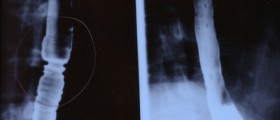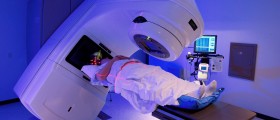
Esophageal Cancer
In the following text we will focus on the issue of esophageal cancer and especially on the survival rates connected with this grievous condition. Although this problem is not as common in America as in Asian and African nations, it still affects thousands of people in America every year. Some say that chances of contracting this condition are 1:200, but due to the advance of medicine, the number of esophageal casualties has decreased.
The condition of esophageal is created due to the cancerous cells development. This development happens in the tube stretching from the stomach to the throat. The name of this tube is esophagus. The most common causes for the esophageal are excessive drinking, tobacco abuse and smoking, but there are many others. Problems experienced during this condition include indigestion, heartburn, coughing and weight loss. In order to diagnose the problem, doctor has to perform several tests and some of them include chest x-ray, endoscopy, and biopsy. Radiation and chemotherapy are some of the treatments used for elimination of this problem. This is a serious condition that can induce death so treat it with extra caution and care.
Survival Rate
Unfortunately, the numbers of survivals are very low. The problem of esophageal cancer is a problem that grows and becomes more dangerous and severe. This is because of the spreading of the dangerous cells. The survival rates decrease over time, since the problem grows with each minute and every next stage becomes more and more life-threatening. The esophageal cancer has four stages. The last, fourth stage has almost zero chances of survival, but we will give you a list of survival rates for every stage in the following text.
The numbers for the survival rate during the first five years are as following: the rate is approximately 70% during the zero stage when the cells are confined in the layers of epithelium, but when cells attack submucosa, during the first stage, chances are 60%. The chances of survival are 40% during the first part of the second stage when the cells invade muscle of the esophagus. When they go further from the esophagus, during the second part of the second stage, chances are 20%. The chances are in the region of 15%. During this stage, the cells spread to the surrounding organs. In the first part of the fourth stage, when cells invade lymph nodes, chances are 15% and when the cells attack distant organs and lymph nodes, during second part of the fourth stage, the chances of survival drop below 5%. If the problem is detected in the early stages, the survival rate is around 60%, but this number drops if the diagnosis is delayed.
When we talk about the group most affected by this problem, is seem to be affecting males and older people the most, especially people between 55 to 80 years of age. When we take all statistics and numbers in consideration, we come up with combined 17% chances of survival.

















Your thoughts on this
Loading...